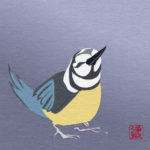 Today’s mindful pause focused on nurturing the strength and support we already carry within us by “resourcing,” consciously drawing into our attention experiences of love, support, and wisdom. These resources can include, to name just a few, our breath and sense of grounding on the earth; people who love us, both living and dead; spiritual figures such as Jesus or Buddha or Ganesh; the support of the air and water, as well as other aspects of nature and the wild; and memories of balance and equilibrium.
Today’s mindful pause focused on nurturing the strength and support we already carry within us by “resourcing,” consciously drawing into our attention experiences of love, support, and wisdom. These resources can include, to name just a few, our breath and sense of grounding on the earth; people who love us, both living and dead; spiritual figures such as Jesus or Buddha or Ganesh; the support of the air and water, as well as other aspects of nature and the wild; and memories of balance and equilibrium.
Introductory Remarks: Resourcing
Guided Meditation: Resourcing
At the end of our meditation, I shared an excerpt from “Finding What life Is,” by Shodo Harada, published in Awake at the Bedside: Contemplative Teachings on Palliative and End of Life Care, edited by Koshin Paley Ellison and Matt Weinghast:
SHODO HARADA ROSHI is abbot of Sogen-ji, a three-hundred-year-old Rinzai Zen monastery in Okayama, Japan. He is a master of Japanese calligraphy and has conducted demonstrations at the Asian Art Museum in San Francisco and the Metropolitan Museum in New York. He is also abbot of Tahoma Monastery on Whidbey Island north of Seattle. He founded Enso House, a hospice affiliated with Tahoma, where his students attend to the dying. Here he tells a story about his teacher, Yamada Mumon Roshi.
Excerpt
[Shortly after he entered the monastery,} Mumon Roshi became sick with tuberculosis, and in those days there was no medicine for that. The doctors said, “We can’t save him; just let him do whatever he wants to now.”
He went back to his [family’s] house in the country and was put into a room, and when the servants would come in to bring his food they would hold their breath and leave as soon as possible. Mumon Roshi began feeling like he was a danger and a burden to the people around him. “People don’t want me here; I’m really just a problem.”
He began to feel resentful and terrible. He had failed miserably in [law] school; then when he went to train [ as a monastic] he had gotten really sick, so sick that no one wanted to be around him. More and more he felt that there was no point in his staying alive.
It was a day in June. On this morning when he awoke he was feeling better than usual, not coughing as much, so he crawled onto the wooden porch. On that day there was a cool breeze blowing. In that cool breeze he could see the heavenly white bamboo flowers moving. He was feeling particularly good that day. Suddenly it hit him: this wind, this breeze, what is that? What is this breeze?
And suddenly he realized he had all this time been given life by air. This air had always been supporting him; he had always been breathing this air without realizing it. All his friends had been [surpassing] him, he had been failing, all the servants hated him and did not want him around. But now he found out that this air — not only the air, but this great nature, and water — these things had never deserted him….
Suddenly …. he awoke to the fact that his life was supported by everything in the universe. He directly got this. On that morning he was completely transformed by understanding these natural blessings. nature, and water — these things had never deserted him. …
They are blessings that are given to us and from them we stay alive. He rediscovered his worth, his value, as simply being someone who is alive. He dropped the whole idea that he was worthless and that no one wanted him around, and he got stronger and stronger; within a month he was walking outside and doing regular work. Forty years later he had never been to see a doctor; he was living a very full life and putting all of his energy into teaching Zen to people all over the world. I was able to see this right in front of me because I was his attendant.
“Finding What Life Is,” by Shodo Harada, in Ellison, Koshin Paley. Awake at the Bedside: Contemplative Teachings on Palliative and End-of-Life Care (pp. 278-279). Wisdom Publications. Kindle Edition.
